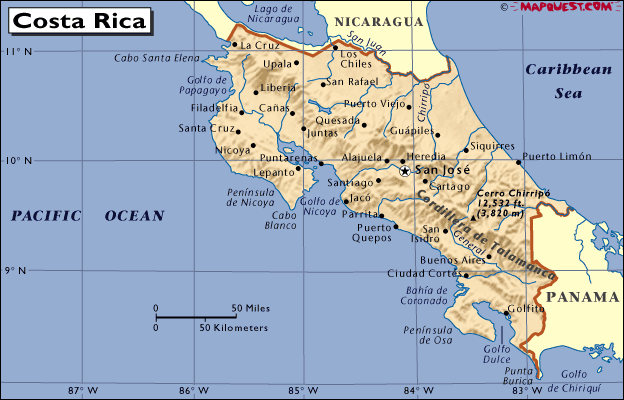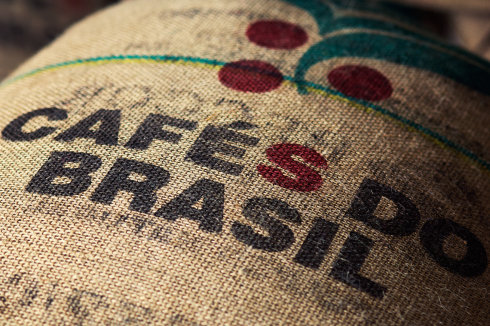World Coffee Manor production area introduction: coffee producing country Brazil Cafes Do Brazil (part I)
When the World Cup is in full swing, it is the right time to write about Brazil.
The football kingdom is also a well-deserved "coffee kingdom".
Country profile
The full name, the Federative Republic of Brazil, the Federative Republic of Brazil, referred to as Brazil.
The capital, Brasilia, Brasilia.
It is divided into 26 states and 1 Federal District (Federal District of Brasilia).
The largest city, Sao Paulo, Sao Paulo. Important city, Rio de Janeiro, Rio De Janeiro.
Country code, BRA.
Longitude 35-74 degrees west, latitude 5-35 south.
To the east is the South Atlantic Ocean, and the land borders with ten countries, namely, French Guiana, Suriname, Guyana, Venezuela, Colombia, Peru, Bolivia, Paraguay and Argentina. Brazil has borders with other South American countries except Chile and Ecuador.
South America is the largest country, accounting for 46% of South America. After Russia, Canada, China and the United States, the land area is the fifth in the world.
South America is the largest country in terms of economic output. One of the BRIC countries.
The domestic terrain is the Amazon plain in the north and mountainous in the south.
In 1500, the Portuguese navigator discovered Brazil. Later, it was a Portuguese colony.
In 1807, Napoleon invaded Portugal and the Portuguese royal family moved to Brazil.
In 1820, the royal family moved back to Lisbon and Prince Pedro remained regent of Brazil.
In 1822, Pedro, who declared complete independence from Portugal and became the Brazilian empire, was crowned emperor.
From 1822 to 1889, it was the imperial period.
In 1889, a coup d'é tat established the United States of Brazil.
In 1960, the capital moved from Rio de Janeiro to Brasilia.
1964, coup.
1967, establish the Federative Republic of Brazil.
A brief History of Coffee
Coffee came to Brazil from French Guiana in 1727. Brazil has always wanted to introduce coffee, but the existing producing countries are so stingy that they refuse to give coffee seeds to people. Later, the soldier Francisco de Melo Palheta visited French Guiana to mediate the border dispute between French Guiana and Suriname. With his charm, he won the favor of the first Lady and the Governor's wife of French Guiana at that time. When Francisco left for home from official business, the parting bouquet given by the Governor's wife contained coffee seedlings.
Coffee was originally grown in the state of Para and began to grow in the state of Rio de Janeiro in 1770.
At first, Brazilian plantations produced mainly sugar, and no one would have thought that coffee would later become the protagonist.
The initial rise of Brazilian coffee plantations depended on the slave trade, especially black slaves from Africa. The arrival of black slaves provided enough cheap labor for the plantations, so that in the middle of the 19th century, when the European abolitionist movement was high, the Brazilian government refused to announce the abolition of the slave trade. Later, in view of the fact that European countries have announced a ban on the slave trade, the slave trade in Brazil continued. In 1888, Brazil finally abolished the slave trade. What followed was the shortage of labour on the plantation. To this end, the Brazilian government vigorously promoted the immigration program, and immigrants from Europe replenished the labor force, with the largest number of immigrants from Italy, Germany and other Western European countries. In addition, immigrants from Japan, North Korea and China also arrived.
Until the early 19th century, coffee production in Brazil was mainly for domestic consumption. Since the 1840s, Brazil has gradually become a giant in the international coffee market and occupied a dominant position. In the 1920s, coffee production in Brazil peaked, accounting for 80% of the global supply. In the 1930s, the coffee industry was not immune from the economic crisis. As a result of this blow, the Brazilian government began to regulate coffee production, and the proportion of global supply gradually declined. However, Brazil still maintains its position as the largest producer of coffee, and now 1/3 of the global coffee supply comes from Brazil.
Coffee producing area
Coffee is produced in 13 states across the country, mostly in Minas Gerais, Sao Paulo, Rio de Janeiro, Parana and Bahia, concentrated on the southeast coast (orange below).
In the era of boutique coffee, there were three well-known producing areas, Cerrado, Mogiana and Sul Minas, all located in the state of Minas Gerais.
The picture shows the orange-Arabica producing area. Red-Robusta producing area.
Source:
Qingdao Xiumen Coffee blog
Important Notice :
前街咖啡 FrontStreet Coffee has moved to new addredd:
FrontStreet Coffee Address: 315,Donghua East Road,GuangZhou
Tel:020 38364473
- Prev

World Coffee Manor area introduction: coffee country Costa Rica Cafe de Costa Rica
Country profile Costa Rica, Spanish La Republic de Costa Rica, English the Republic of Costa Rica, full name Costa Rica. San Jose, the capital, San Jose. The official language is Spanish. The administration is divided into 7 provinces, 81 counties and cities and 421 districts. In 1502, Columbus first discovered the coast of CR during his fourth voyage. Then, West
- Next

World Coffee Manor production area introduction: coffee producing country Brazil Cafes Do Brazil (part two)
Coffee varieties Arabica and Robusta are produced, of which Arabica accounts for 70% to 80%. In Arabica coffee, the more common varieties are Modo Novo, Catuai, Bourbon, Maragoripe and so on. Coffee harvest can have three or four harvest seasons in a year. Mechanical picking is very common. The method of picking is very different from that of other boutique countries. Mechanical picking process
Related
- Does Rose Summer choose Blue, Green or Red? Detailed explanation of Rose Summer Coffee plots and Classification in Panamanian Jade Manor
- What is the difference between the origin, producing area, processing plant, cooperative and manor of coffee beans?
- How fine does the espresso powder fit? how to grind the espresso?
- Sca coffee roasting degree color card coffee roasting degree 8 roasting color values what do you mean?
- The practice of lattes: how to make lattes at home
- Introduction to Indonesian Fine Coffee beans-- Java Coffee producing area of Indonesian Arabica Coffee
- How much will the flavor of light and medium roasted rose summer be expressed? What baking level is rose summer suitable for?
- Introduction to the characteristics of washing, sun-drying or wet-planing coffee commonly used in Mantenin, Indonesia
- Price characteristics of Arabica Coffee Bean Starbucks introduction to Manning Coffee Bean Taste producing area Variety Manor
- What is the authentic Yega flavor? What are the flavor characteristics of the really excellent Yejasuffi coffee beans?

